Author: Steve Thanos
Bitterness in beer is largely a function of hops added during the boil, and it’s widely held that this is especially true for additions made early on. When added to boiling wort, the alpha acids in hops are isomerized into perceptibly bitter iso-alpha acids, and many have accepted that the longer those hops remain in the wort, the more bitter the resultant beer will be. As such, hopping rates are often determined not just by the alpha acids present in the particular hop variety being used, but the duration with which those hops will remain in the boil.
Seemingly influenced by the rise in Hazy IPA, which is notably less bitter than it’s clearer cousins, brewers have been experimenting with later kettle hop additions, in part because of the higher alpha acids present in some of the most desirable varieties. While the popularity of this style is proof enough that such a departure from tradition seems to be working just fine, there are some who have posited that something desirable is lost by skipping earlier kettle additions.
In the years I’ve been brewing, I’ve tended to make hop additions at the start of the boil as a matter of course, and it never occurred to me to even consider what might happen if those hops were removed from the wort prior to boil’s end. However, this idea recently came up in a conversation with other brewers, particularly whether removing hops mid-boil would result in a noticeable impact to bitterness, though I also wondered about aroma and flavor. Curious to see for myself, I designed an xBmt to test it out!
| PURPOSE |
To evaluate the differences between a Kölsch where bittering hops were added at the start of the boil and either remained throughout the boil or were removed midway through.
| METHODS |
My goal being to emphasize any impact of removing hops midway through the boil, I went with a simple Kölsch recipe for this xBmt.
Innocent Betrayal
Recipe Details
| Batch Size | Boil Time | IBU | SRM | Est. OG | Est. FG | ABV |
|---|---|---|---|---|---|---|
| 5 gal | 60 min | 23.9 | 3.5 SRM | 1.058 | 1.007 | 6.69 % |
| Actuals | 1.058 | 1.007 | 6.69 % | |||
Fermentables
| Name | Amount | % |
|---|---|---|
| Pilsner | 8.5 lbs | 89.47 |
| Munich Malt | 1 lbs | 10.53 |
Hops
| Name | Amount | Time | Use | Form | Alpha % |
|---|---|---|---|---|---|
| Magnum | 14 g | 60 min | Boil | Pellet | 12 |
| Magnum | 14 g | 5 min | Boil | Pellet | 12 |
Yeast
| Name | Lab | Attenuation | Temperature |
|---|---|---|---|
| Dieter (G03) | Imperial Yeast | 77% | 32°F - 32°F |
Notes
| Water Profile: Ca 55 | Mg 12 | Na 9 | SO4 48 | Cl 35 |
Download
| Download this recipe's BeerXML file |
After collecting the full volume of water for both batches and adjusting them to the same preferred mineral profile, I weighed out and milled the grains.
Once the water for each batch was adequately heated, I incorporated the grains then checked to make sure both were at the same target mash temperature.
While the mashes were resting, I prepared the kettle hop additions.
Once each 60 minute mash was complete, I removed the grains and brought each batch of wort to a boil, at which point I added the bittering hop additions to hop spiders.
At 30 minutes into the 60 minute boil, I removed the hops from one of the worts. When the boils were finished, I quickly chilled them with my Hydra IC.
Hydrometer measurements showed the batch where the hops remained in the boil was 0.003 OG higher than the batch where the hops were removed mid-boil.
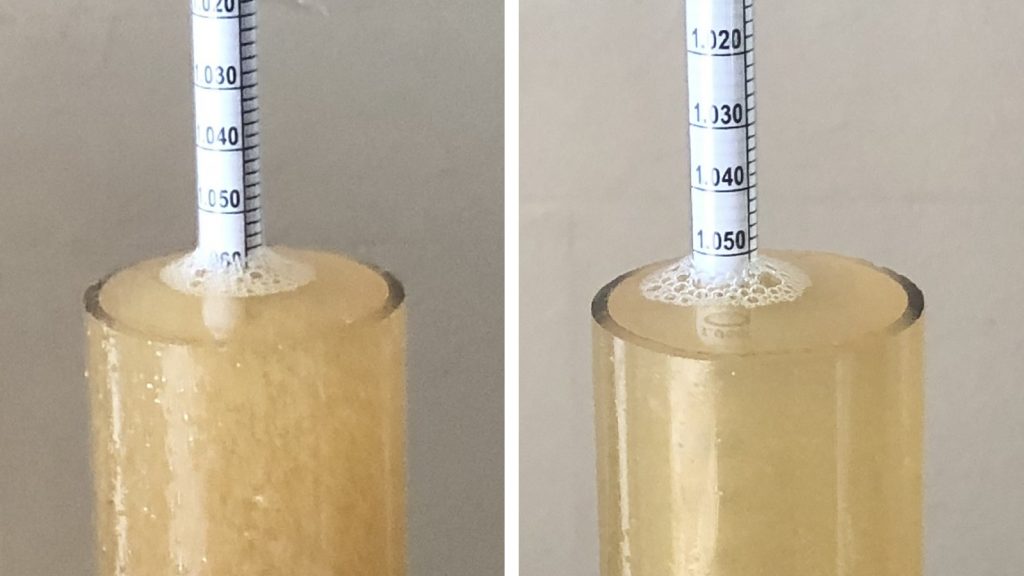
After racking identical amounts of wort to sanitized fermenters, I placed them in my chamber and pitched a single pouch of Imperial Yeast G03 Dieter into each.
The beers were left to ferment at 64°F/18°C for 3 weeks before I took hydrometer measurements showing both finished at the same FG.
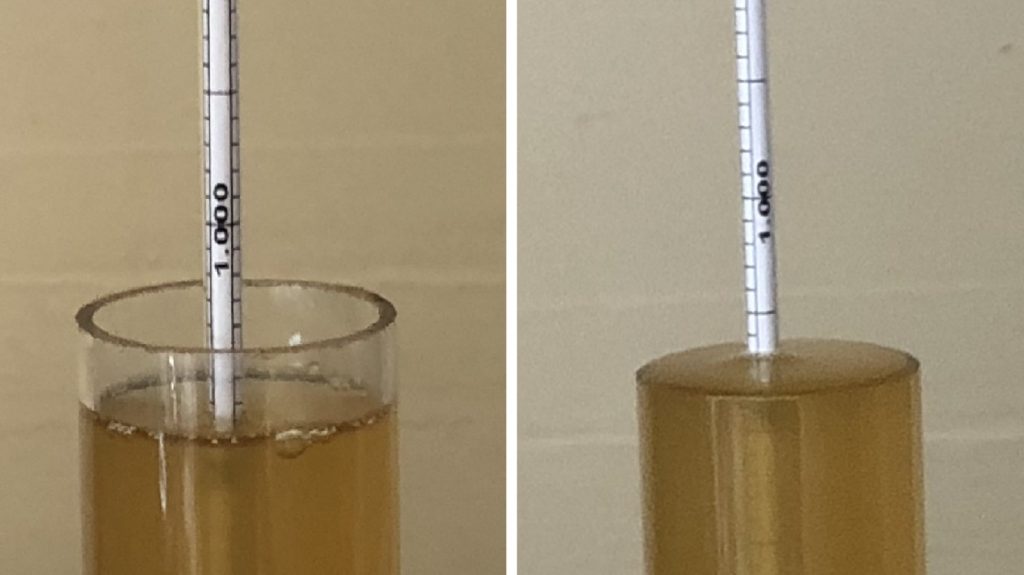
At this point, I racked the beers to sanitized kegs, which were placed in my keezer and left on gas for 2 weeks before I began my evaluations.
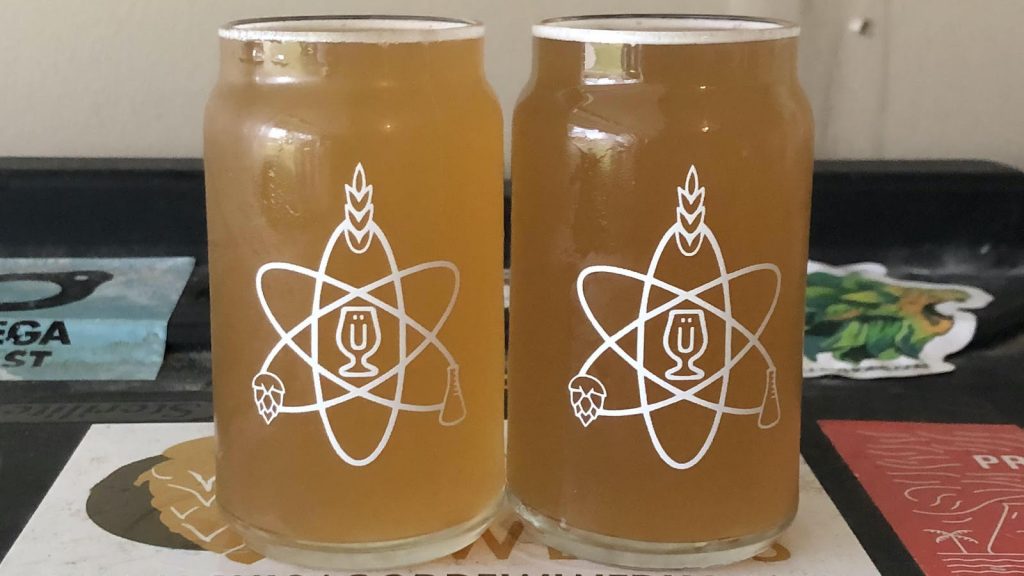
| RESULTS |
Huge thanks to the crew at Werk Force Brewing for allowing me collect data at their terrific brewery! A total of 20 people of varying levels of experience participated in this xBmt. Each participant was served 2 samples of the beer where the hops remained throughout the boil and 1 sample of the beer where the hops were removed mid-boil in different colored opaque cups then asked to identify the unique sample. While 11 tasters (p<0.05) would have had to accurately identify the unique sample in order to reach statistical significance, 15 did (p=0.0002), indicating participants in this xBmt were able to reliably distinguish a Kölsch where bittering hops were left in the wort the entire duration of the 60 minute boil from one where the bittering hops were removed halfway through the boil.
The 15 participants who made the accurate selection on the triangle test were instructed to complete a brief preference survey comparing only the beers that were different. A total of 4 tasters reported preferring the beer where the bittering hops remained in the wort throughout the boil, 9 said they liked the beer where the bittering hops were removed mid-boil, 1 had no preference despite noticing a difference, and 1 person reported perceiving no difference.
My Impressions: Out of the 5 semi-blind triangle tests I attempted, I correctly identified the odd-beer-out every time. To my palate, the beer that had the bittering hops removed mid-boil was perceptibly sweeter, while the beer where the hops remained throughout the boil was properly bitter, which made it crisper and more personally enjoyable to drink.
| DISCUSSION |
It’s well established that hops added to boiling wort contribute bitterness to beer, though there are some who question whether the duration with which hops are boiled impacts the isomerization of alpha acids. The fact tasters in this xBmt were able to reliably distinguish a Kölsch where the bittering hops were left in the wort for the entire 60 minute boil from one where they were removed halfway through the boil suggests the amount of time hops spend in boiling wort has a perceptible impact.
These findings provide some confirmation of the traditional approach to kettle hopping, as hops added at the beginning of the boil will impart more bitterness than those added later on down the line. In addition to the perceptible difference between these beers, the beer where the hops remained throughout the boil was 0.003 OG higher than the one where the hops were removed mid-boil. While a relatively small difference that could have been caused by something else, I couldn’t help but wonder if something extracted from the hops may have been responsible for this.
Admittedly, this xBmt was motivated by my personal interest in whether removing hops mid-boil would have a noticeable impact, and the fact it did won’t impact my brewing process. But it certainly gave me something to think about, and I appreciate having both data and first-hand experience that supports the notion that the time hops spend in boiling wort does effect bitterness.
If you have any thoughts about this xBmt, please do not hesitate to share in the comments section below!
Support Brülosophy In Style!
All designs are available in various colors and sizes on Amazon!
Follow Brülosophy on:
FACEBOOK | TWITTER | INSTAGRAM
If you enjoy this stuff and feel compelled to support Brulosophy.com, please check out the Support page for details on how you can very easily do so. Thanks!


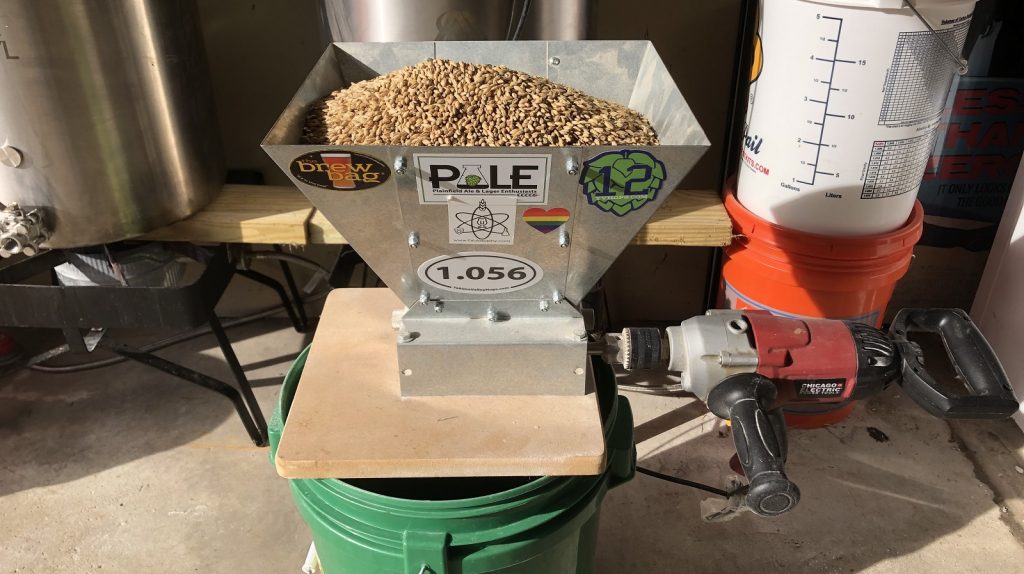
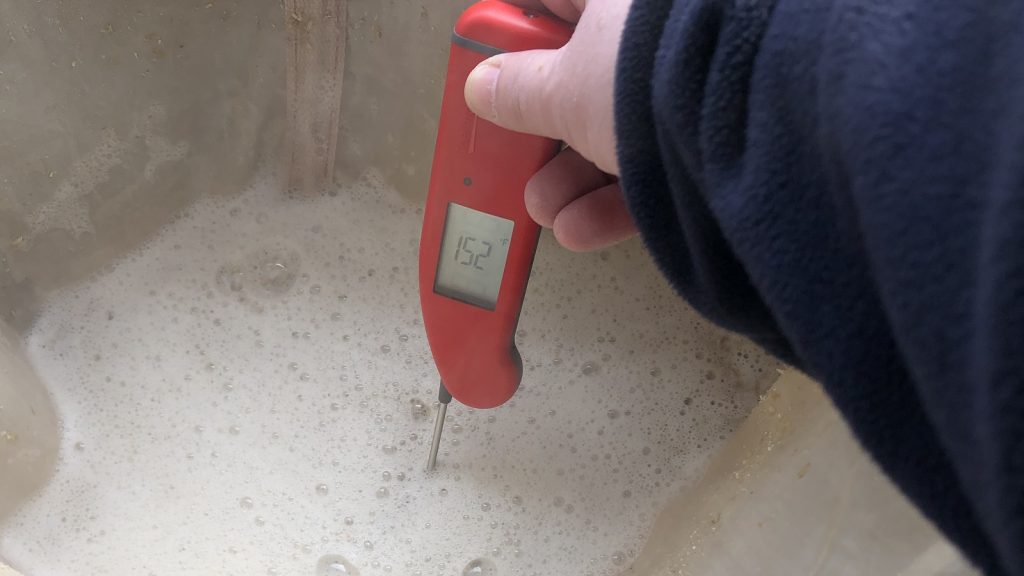
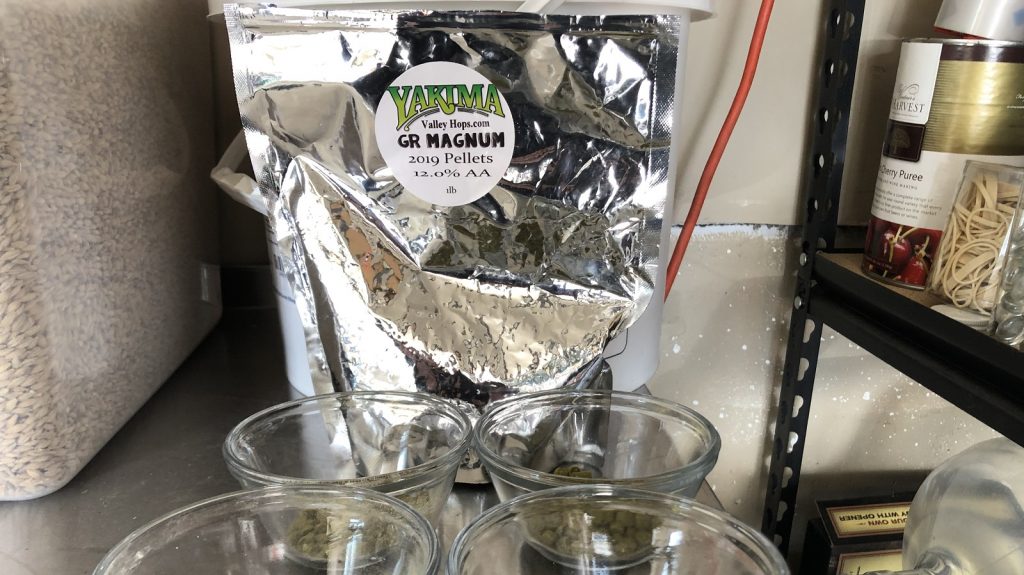
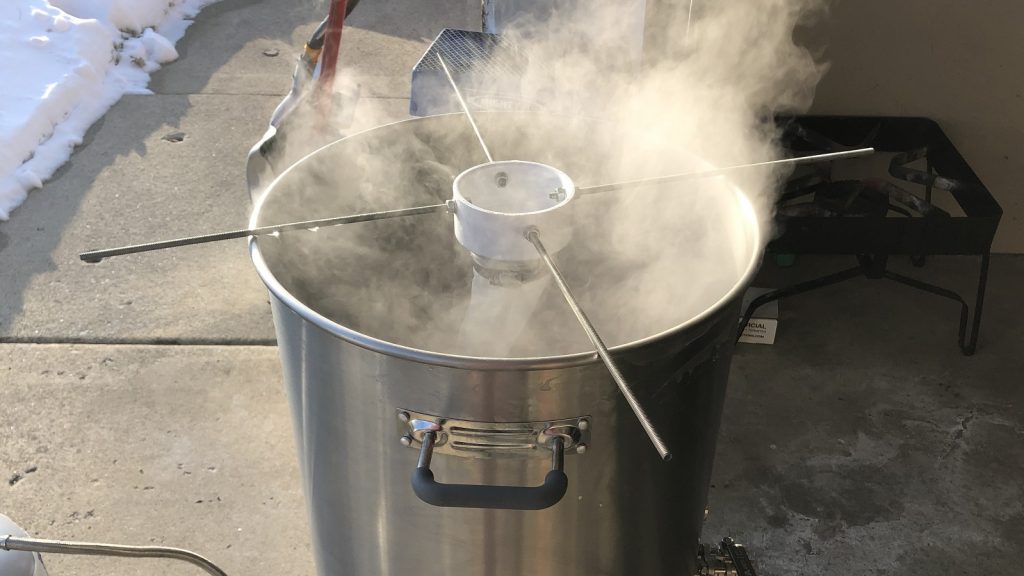
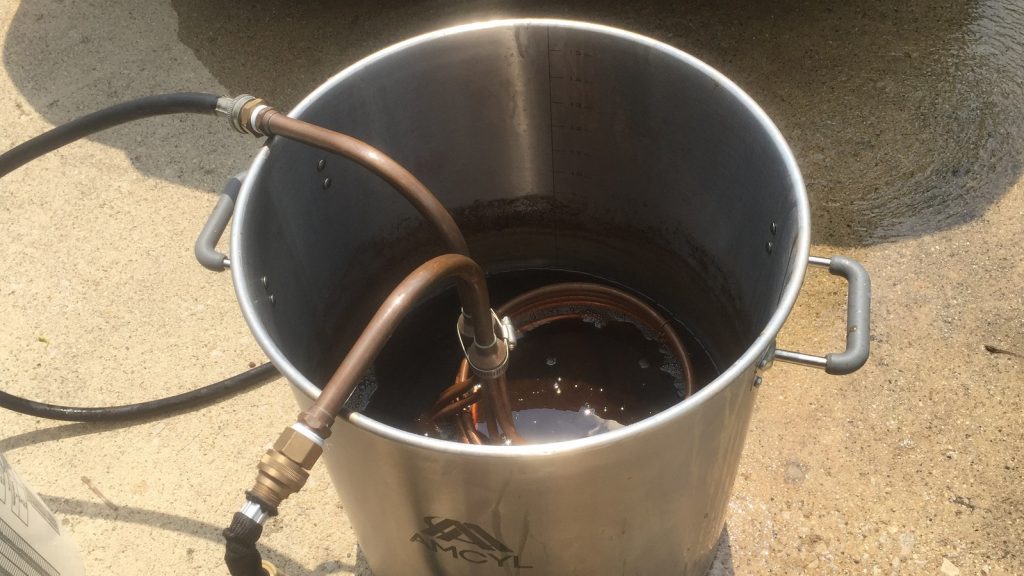
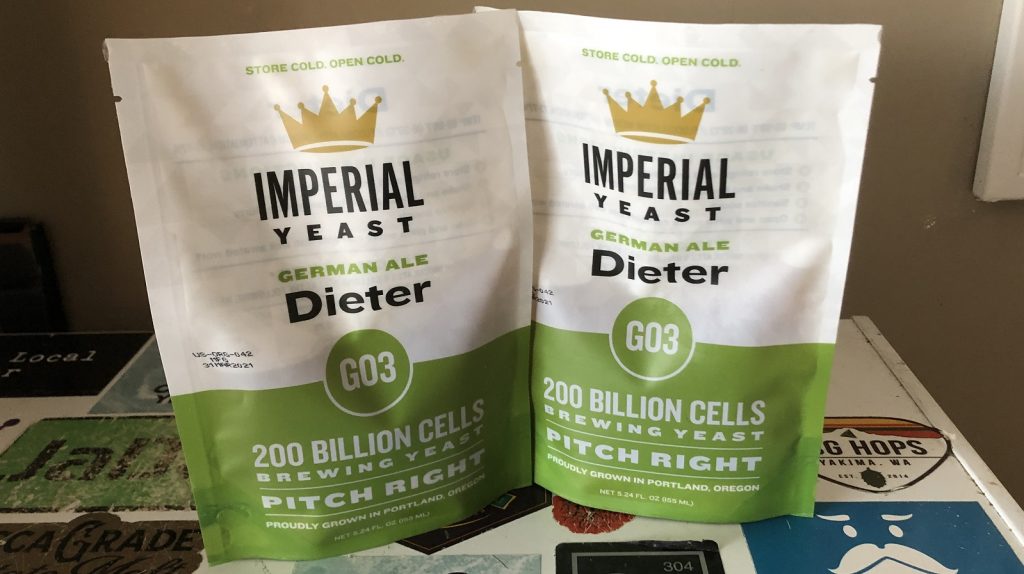











14 thoughts on “exBEERiment | Impact Removing Bittering Hops Mid-Boil Has On A Kölsch”
Wouldn’t removing the hops after 30 minutes be equivalent to adding them at 30 minutes into the boil? Boiling the hops for half the time means less extraction and less IBU in the finished product making it sweeter/maltier. Also at that point why not just adjust the starting water amount and the the grain bill (as needed) and boil only for the 30 minutes where hops are actually present?
I think the test between beers hopped for first 30 minutes vs beer hopped for last 30 minutes, or beer hopped for 60 minutes with less hops vs beer hopped for 30 minutes with more would be more interesting. The conclusion of this exbeeriment should be rather obvious to all the brewers
If I had to guess, I’d say there were more dissolved hop solids in the 60 minute boil brew which lead to the 0.003 difference in OG but same FG. The solids would have settled out during fermentation. Could be interesting to allow the wort to sit for 24 hours before pitching the yeast and taking a reading then to see if there was a change.
Also the difference in color suggests that somehow removing the hops midway allowed for more caramelization to occur, which would also help explain the enhanced sweetness, in my uneducated opinion.
Honestly this really surprised me. I thought that the hop oils were extracted rather quickly and keeping the vegetal matter itself in there would be largely irrelevant, except maybe for the extraction of some more vegetal/grassy aromas.
Quite surprised the bitterness was actually reduced significantly!
I didn’t know what to expect in terms of how long it took. Some spices and herbs take a healthy amount of time to release their oils into a hot solution, while others seem to do it quickly.Your first expectation seems plausible, at least.
If the hops had kicked off all of their acids early and isomerization began after a few minutes, then it shouldn’t have mattered that the remaining hop sludge was pulled after 30 minutes. But according to this test, there’s still life in that hop sludge after 30 minutes. Maybe this has something to do with limited exposure to the wort in that hop spider?
Another exbeeriment could be this:
Wort 1: add hops at start, then remove at 30 minutes
Wort 2: add hops at 30 minutes, leave until the end
It would be great to see IBU measurements on this one. I’m curious whether the added bitterness is due to more AA’s being extracted and isomerized, or whether the IBU’s are close enough where the difference may be from tannin and/or some other compounds extracted from the vegetal matter of the hops.
Cool thought experiment, and even cooler that you were able to see it through!
A better experiment would have been to boil a certain number of AAU’s (HBU’s) of whole/leaf hops for 90 minutes in one half of the beer, and boil the same quantity of AAU’s (HBU’s) of pellet hops for only 45 minutes within the other half. Add nothing but these bittering hops. Then have the two beers analyzed for IBU’s. This would confirm whether pellet hops are capable of liberating essentially all of their IBU’s within half the boiling time generally presumed for whole hops to likewise liberate essentially all of their IBU’s.
Steve, very interesting exbeeriment. I brew a mean Kolsch, some people say they are hard to brew but I guess it just fits for me. What I took from the the results is I’m not going to change my hop schedule. Also, have you ever made it to Sable Creek Winery just down from Werk Force Brewery? If you do tell them to give you a glass on me, Uncle Butch.
Prost!
Brewbuzzard
Denny pointed this out to me. How about just adding the hops at the midpoint? The experiment should be doing one batch just adding the hops half way through the boil. The other batch adding the hops at the beginning of the boil and then remove half way.
I find this experiment particularly relevent for brewers using the no chill method as it would indicate that removing the hops before adding the hot wort to the no chill cube would seem to stop further isomeration of alpha acids while the hot wort sits in the cube.
This is basic proven chemistry, didn’t really need testing!
@westonfront,
What is the chemistry that is proven that doesn’t need testing?
Please enlighten us.
I am most surprised by two things from this exbeeriment.
1) the significant difference in gravity points doesn’t make sense. Hop sediment would affect a refractometer but not likely a hydrometer.
2) the obvious difference in color due to kettle Maillard reactions? Adding hops in the boil will raise the pH which can more rapidly allow for caramelization.
I agree with others, too many confounding variables. Consider repeating exbeeriment. Interesting stuff.
-Austin Y.
My understanding is that cohumulone is the most soluble alpha acid so dissolves faster than the others but provides the harshest flavour, while the other alpha acids dissolve and isomerise slower but provide a better quality of bitterness. This is why noble hops with low cohumulone levels provide a better bitterness but require a longer boil to achieve that bitterness. If so, this fits with the longer boil here providing a more bitter beer with a better flavour and the one with the hops removed at 30 minutes will have had some of the “good” undissolved alpha acids removed in the solids leaving a lower amount of bitterness but a higher proportion of cohumulone and consequently a poorer flavour. However, I just found this paper that appears to claim that the alpha acids dissolve and isomerise at the same rate. https://cdn.imagearchive.com/aussiehomebrewer/data/attach/18/18102-Iso.-and-Degrad.-Kinetics-of-Hop-Acids.pdf It is possible that the model system used in the paper doesn’t correlate with what happens in a real wort. Personally, I am going to stick with long boils.